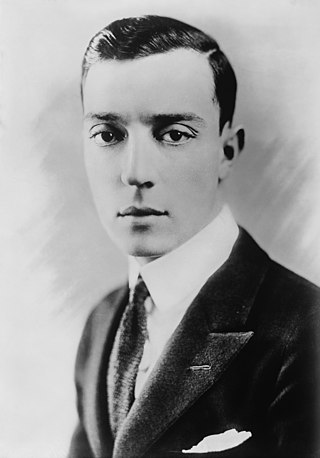
Joseph Frank "Buster" Keaton was an American actor, comedian and film director. He is best known for his silent films during the 1920s, in which he performed physical comedy and inventive stunts. He frequently maintained a stoic, deadpan facial expression that became his trademark and earned him the nickname "The Great Stone Face".
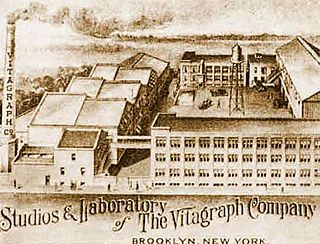
Vitagraph Studios, also known as the Vitagraph Company of America, was a United States motion picture studio. It was founded by J. Stuart Blackton and Albert E. Smith in 1897 in Brooklyn, New York, as the American Vitagraph Company. By 1907, it was the most prolific American film production company, producing many famous silent films. It was bought by Warner Bros. in 1925.

The Hollywood Hotel was a famous hotel, society venue of early Hollywood, and landmark, formerly located at 6811 Hollywood Boulevard, on the north side, extending from Highland Avenue to Orchid Avenue, in central Hollywood, Los Angeles, California.

Bernard Ralph Maybeck was an American architect in the Arts and Crafts Movement of the early 20th century. He worked primarily in the San Francisco Bay Area, designing public buildings, including the Palace of Fine Arts in San Francisco, and also private houses, especially in Berkeley, where he lived and taught at the University of California. A number of his works are listed on the National Register of Historic Places.

Norma Marie Talmadge was an American actress and film producer of the silent era. A major box-office draw for more than a decade, her career reached a peak in the early 1920s, when she ranked among the most popular idols of the American screen.

Joseph Michael Schenck was a Russian-born American film studio executive.
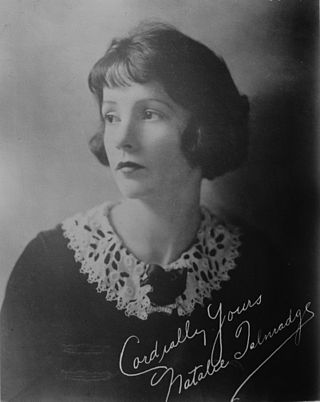
Natalie Talmadge was an American silent film actress who was the wife of Buster Keaton and sister of the movie stars Norma and Constance Talmadge. She retired from acting in 1923.

Clyde Adolf Bruckman was an American writer and director of comedy films during the late silent era as well as the early sound era of cinema. Bruckman collaborated with such comedians as Buster Keaton, Monty Banks, W. C. Fields, Laurel and Hardy, The Three Stooges, Abbott and Costello, and Harold Lloyd.

Margaret Leahy was a British actress. After winning a beauty contest, Leahy made only one film.
Seven Chances is a 1925 American silent comedy film directed by and starring Buster Keaton, based on the play of the same name by Roi Cooper Megrue, produced in 1916 by David Belasco. Additional cast members include T. Roy Barnes, Snitz Edwards, and Ruth Dwyer. Jean Arthur, a future star, has an uncredited supporting role. The film's opening scenes were shot in early Technicolor. The film includes Keaton's famous rock avalanche sequence.
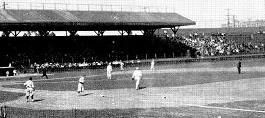
Washington Park was a baseball park in Los Angeles, California, United States. It was primarily used for baseball and was the home of the Los Angeles Angels in the Pacific Coast League (PCL) from its opening on March 28, 1911, until they moved to Wrigley Field late in the 1925 season. The final game at Washington Park was held on September 27, 1925.

The Glendale Transportation Center is an Amtrak and Metrolink train station in the city of Glendale, California. It is served by the Amtrak Pacific Surfliner intercity rail route and the Metrolink Ventura County Line and Antelope Valley Line commuter rail routes.

Day Dreams is a 1922 American short comedy film directed by and featuring Buster Keaton. It is most famous for a scene where Keaton finds himself on the inside of a riverboat paddle wheel. It is a partially lost film and available from public domain sources.
Norma Triangle is a residential neighborhood in West Hollywood, California. It encompasses the area bound by Doheny Drive and Beverly Hills on the west, Sunset Boulevard and Holloway Drive on the north, and Santa Monica Boulevard on the south. The small district has the shape of a right triangle.
Gene Verge Sr. was a Canadian-born American architect.
The International Buster Keaton Society Inc.— a.k.a. "The Damfinos"—is the official educational organization dedicated to comedy film producer-director-writer-actor-stuntman Buster Keaton.

Louis Anger was an American vaudeville performer and movie studio executive. During the early days of the American silent film industry, Anger was considered to be "the king of slapstick comedy producers," and was instrumental in developing the film careers of famed actors Fatty Arbuckle and Buster Keaton.
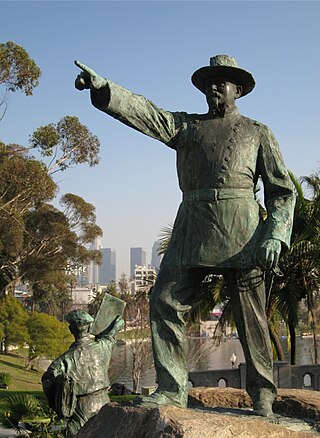
A statue of Harrison Gray Otis is installed in Los Angeles' MacArthur Park, in the U.S. state of California. The bronze statue was originally part of a sculptural group that originally included a newsboy and a soldier. The artist, Paul Troubetzkoy, won a design competition in 1918 and the final product was installed in 1920. The soldier has been absent for decades, the newsboy was stolen for its scrap metal value in March 2024. The theft was discovered by Anne-Lise Desmas, an art historian and Getty Museum curator who brought a colleague from the Louvre to the park to see Troubetzkoy's work and found the newsboy absent. Investigators believe that the metal thieves posed as city maintenance workers to avoid questions about what they were doing with the cast-bronze figure.

The Inglewood depot in Inglewood, California, was built by Atchison, Topeka and Santa Fe Railway in September 1887. From 1902 to 1928 it was used for the Venice–Inglewood Line of the Los Angeles Railroad Pacific Electric Railway Depot, and then for Southern Pacific freight cars until the 1970s when the line was abandoned. The depot appeared in a 1920 Buster Keaton short called One Week, in Harold Lloyd's Safety Last! (1923), and it remained a popular filming location for decades.

Seeing Stars is a 1922 black-and-white eight-minute one-reel "trailer" film notable for a scene shared by Charlie Chaplin and Buster Keaton. Seeing Stars was one of just two times the great silent comedians appeared together onscreen; 30 years later, Limelight (1952) was the second occasion.















